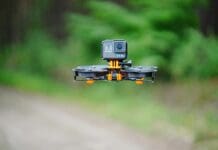
This post is also available in:
 עברית (Hebrew)
עברית (Hebrew)
One of the major challenges of military forces is how to expand the capabilities of soldiers on the modern battlefield. More and more powerful and versatile weaponry, modern systems and gadgets will be included in the personal equipment, which, in turn, requires solutions to ensure their recharge. The increasing number of electronic devices that soldiers need to carry requires more cables to connect equipment to power sources and share data. Increasing rates of Soldier-worn power are therefore required.
The US Army wants to solve this problem by integrating flexible, power cables into a tactical vest used by soldiers.
Combat Capabilities Development Command’s (CCDC) Command, Control, Communications, Computers, Cyber, Intelligence, Surveillance and Reconnaissance (C5ISR) Center has partnered with the CCDC Soldier Center to investigate integrated power solutions in support of programs across the Army.
“This new flexible cable is up to 50 percent lighter than the legacy version,” said Ethan Wise, a C5ISR Center electronics engineer who is leading the project. “It’s much more flexible, less bulky and removes cabling that encumbers a Soldier’s motion when connected to a Conformal Wearable Battery.
“It reduces snag hazards because it can be looped through a tactical vest several times. The new cable feels like the fabric of a standard Army uniform and blends in seamlessly with the camouflage pattern,” said Wise.
A United Kingdom company initially developed the new cable, and the U.S. Army has been investigating its potential uses through the Foreign Comparative Testing program. FCT works with Army science and technology organizations to find and evaluate solutions to meet the operational needs of U.S. Soldiers regardless of the technology’s country of origin.

























